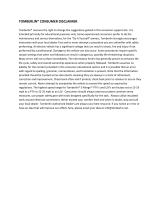
WWW.RADIOMASTERRC.COM
TABLE OF CONTENTS
1. Overview
..........................................................................................
Error! Bookmark not defined.
1.1. Introduction
......................................................................
Error! Bookmark not defined.
1.2. Safety instructions
..........................................................
Error! Bookmark not defined.
1.3. Manual and Firmware download
...............................
Error! Bookmark not defined.
1.4. Important note on firmware
.......................................
Error! Bookmark not defined.
1.5. Radio system overview
..................................................................................................
5
1.6. Power supply and charging precautions
................
Error! Bookmark not defined.
1.7. Note about this guide
...................................................
Error! Bookmark not defined.
1.8. Specifications
....................................................................
Error! Bookmark not defined.
1.9. Warranty and Repair
......................................................
Error! Bookmark not defined.
1.10. Firmware Update and OpenTX Information
.......
Error! Bookmark not defined.
1.11. Disclaimer
.........................................................................................................................
8
1.12. Legal status and copyright
........................................
Error! Bookmark not defined.
2. OpenTX Companion software(OpenTX companion)
...................................................
9
2.1. Software Download and Installation
.......................
Error! Bookmark not defined.
2.2. Use Companion software to update radio firmware
........................................
12
3. First boot
........................................................................................................................................
15
3.1. Battery voltage calibration
.........................................................................................
17
3.2. Gimbal calibration
.........................................................................................................
18
3.3. Default gimbal mode and channel output order
...............................................
20
4. Radio menu
...................................................................................................................................
21
4.1. Main interface
.................................................................................................................
21
4.1.1. Reset, Status and About
.................................................................................
21
4.1.2. Telemetry quick access
...................................................................................
21
4.2. System settings
...............................................................................................................
22
4.2.1 TOOLS description
.............................................................................................
22
4.2.2 SD CARD Instructions
.......................................................................................
23



























